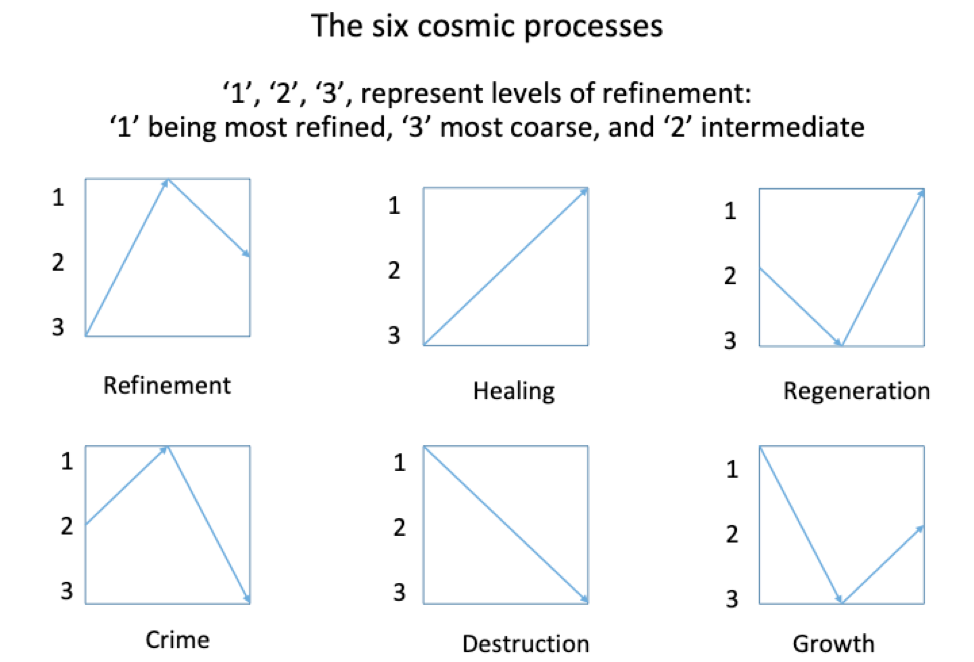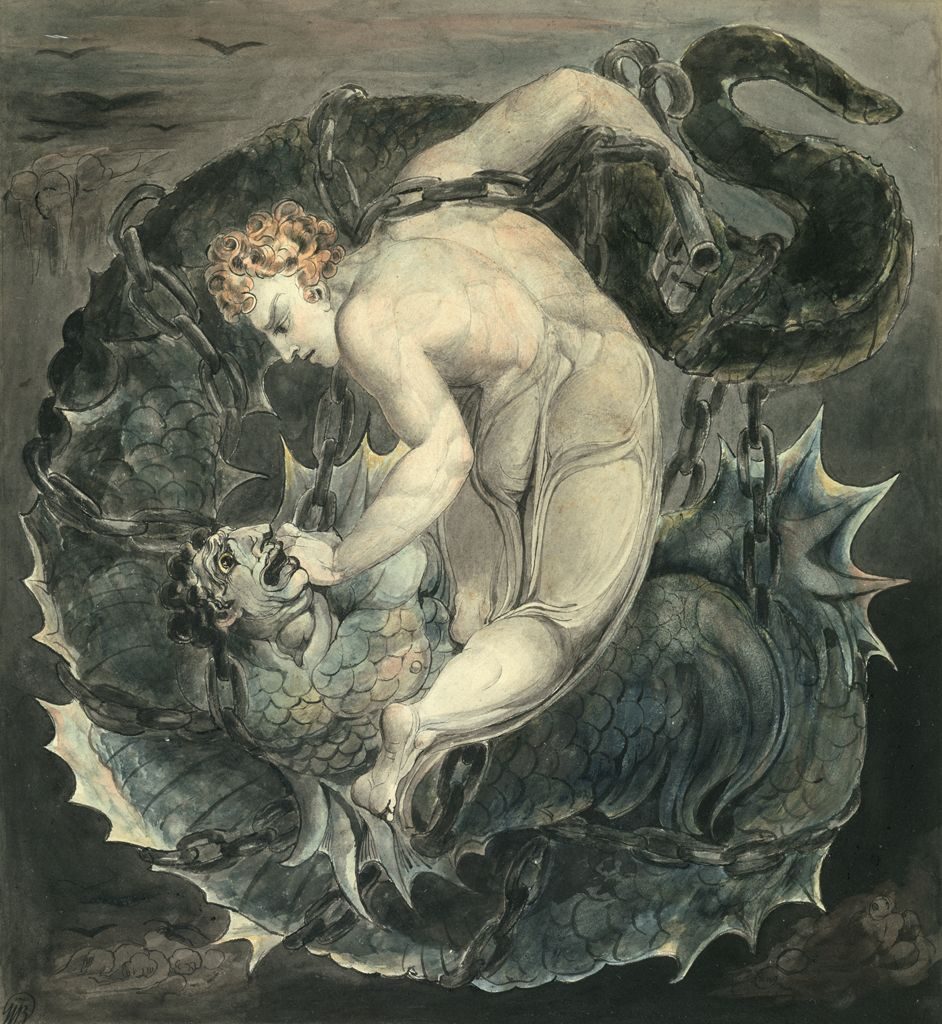What are the six cosmic processes? Fourth Way authors alert us to the fact that all phenomena are created by two laws, the Law of Three and the Law of Seven, and the concept of a cosmos[1].
The Law of Three, Producing Triads
The Law of Three states that for each phenomenon to occur, there must be a combination of three forces—a first, or active, force; a second, passive (or denying) force; and a third, a catalytic or enabling force. By themselves, the active and passive would come to naught, or create a deadlock. It is with the arrival of a third force that phenomena come into being. The clearest example for this comes, perhaps, from biochemistry. Reactants and products of a biochemical reaction, when put together in a vessel, often do not react. It is only with the addition of a facilitating protein, an enzyme, that the reaction occurs. The combination of these three forces is a triad.
The Law of Seven, Regulating Activities
The Law of Seven, or the Law of Octaves, posits that all phenomena proceed according to a progression of notes: do, re, mi, fa, sol, la, and si, followed by another “do,” beginning the next octave. As Gurdjieff suggested, the intervals between the notes mi-fa and si-do are different than intervals between other notes in the octave. In the mi-fa and si-do intervals, the progression of an octave goes more slowly. For the octave to proceed, we must make an extra effort at these places.
Western classical music is an elaborate and lucid exposition of the Law of Seven. And musically, as in life, octaves are either ascending in scale (do, re, mi, fa… upwards) or descending (do, si, la, sol…). The poet Rilke noted that one cannot stay in the same spot for long—one either ascends or descends.
“For staying is nowhere.” – Rainer Maria Rilke
Six Cosmic Processes–Combining the Law of Three and the Law of Seven
The Fourth Way speaks of six cosmic processes, each process representing a different cosmic triad. How is this linked to spiritual development? What do cosmic triads have to do with the desire to be more conscious, or to be present to the needs of the moment? Ouspensky’s collected meeting notes, along with the writings of his student, Rodney Collin, indicate how the six processes combine the Law of Three and the Law of Seven.

In the above diagram, to the left of each box, are the numerals, ‘1’, ‘2’, and ‘3.’[2] Each of these represents a respective ‘hydrogen,’ or energy. They are connected, but not identical, with first, second, and third forces. Each box describes a specific triad, in a sequential combination of energies. In the process of refinement, for example, the coarsest energy (‘3’) is passive in relation to the most refined (‘1’), and results in an intermediate level (‘2’). In the process of destruction, the most refined combines with the intermediate to produce what can be eliminated, the coarsest.
Building and Abandoning the ‘Magnetic Center’
When joining a Fourth Way school, we receive esoteric knowledge. This knowledge is different than ordinary knowledge, in that it may lead to higher, or enhanced, states of consciousness. Before meeting a school, we accumulate B influences,[3] creating a personality called a ‘magnetic center’ that can draw us to a school. On joining, we aim to stop feeding this personality.

The same personality, magnetic center, serves to develop consciousness, or a hunger for consciousness, but later cause consciousness to diminish, having met a school.
We see the double nature of one and the same entity in the William Blake image, where a fighting dragon and an angel have similar faces.
Payment is a Principle
As Gurdjieff and my own teacher[4] have stressed many times, payment—whether monetary or time and effort—is necessary. It is necessary not just for the recipient, but for the student. Without paying, one does not value what one receives. After meeting a school, increasing demands—both visible and invisible—are required.
Ascending and Descending Octaves in the Six Cosmic Processes
Octaves ascend or descend. In ordinary life, many octaves are descending. The processes that define these octaves—destruction, growth, and crime—end on a lower note than the note on which they began. In school work, ascending octaves,–refinement, healing, and regeneration—come to the forefront. The same person, who without a school would have burst out in a temper in response to an unpleasant situation, now aims to control negative emotions and to connect this effort with self-remembering, or presence.
“The higher one climbs, the greater the fall.” – Petrarch
And one must learn from the mistakes of others. We can learn especially from those who have lost the school, even after many years, and with it the connection to a conscious teacher, and to higher influences. One must periodically remind oneself that one can lose everything at once.
“One must relentlessly retrieve the present.” Robert Earl Burton
[1] We will not deal with this concept at length here. In brief, a cosmos is an entity capable of self transcendence. Cosmoses–for example the microcosmos of a human being, the cosmos of humanity, and that of the entire universe–each align to the same cosmic plan and contain each other. A cosmos may be studied, or described, according to the cosmoses above and below it. See also: https://fourthwaytoday.org/personality-and-essence/ by this author.
[2] In Rodney Collin’s presentation, ‘1’=Life, ‘2’=Form, and ‘3’=Matter.
[3] According to Fourth Way authors, there are three influences in the world. A influence comes from life and returns to life, such as money, family, relationships, or fame. B influence includes traces of conscious art and religion, which were once part of a living conscious source, but no longer are. C influence represents a living connection with higher consciousness, connected to the miraculous.
[4] Robert Earl Burton, founder of The Fellowship of Friends. See http://www.robertearlburton.org.